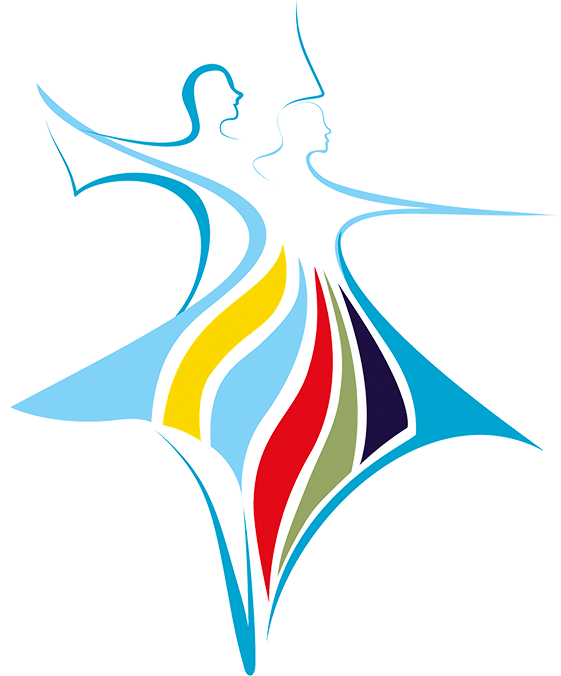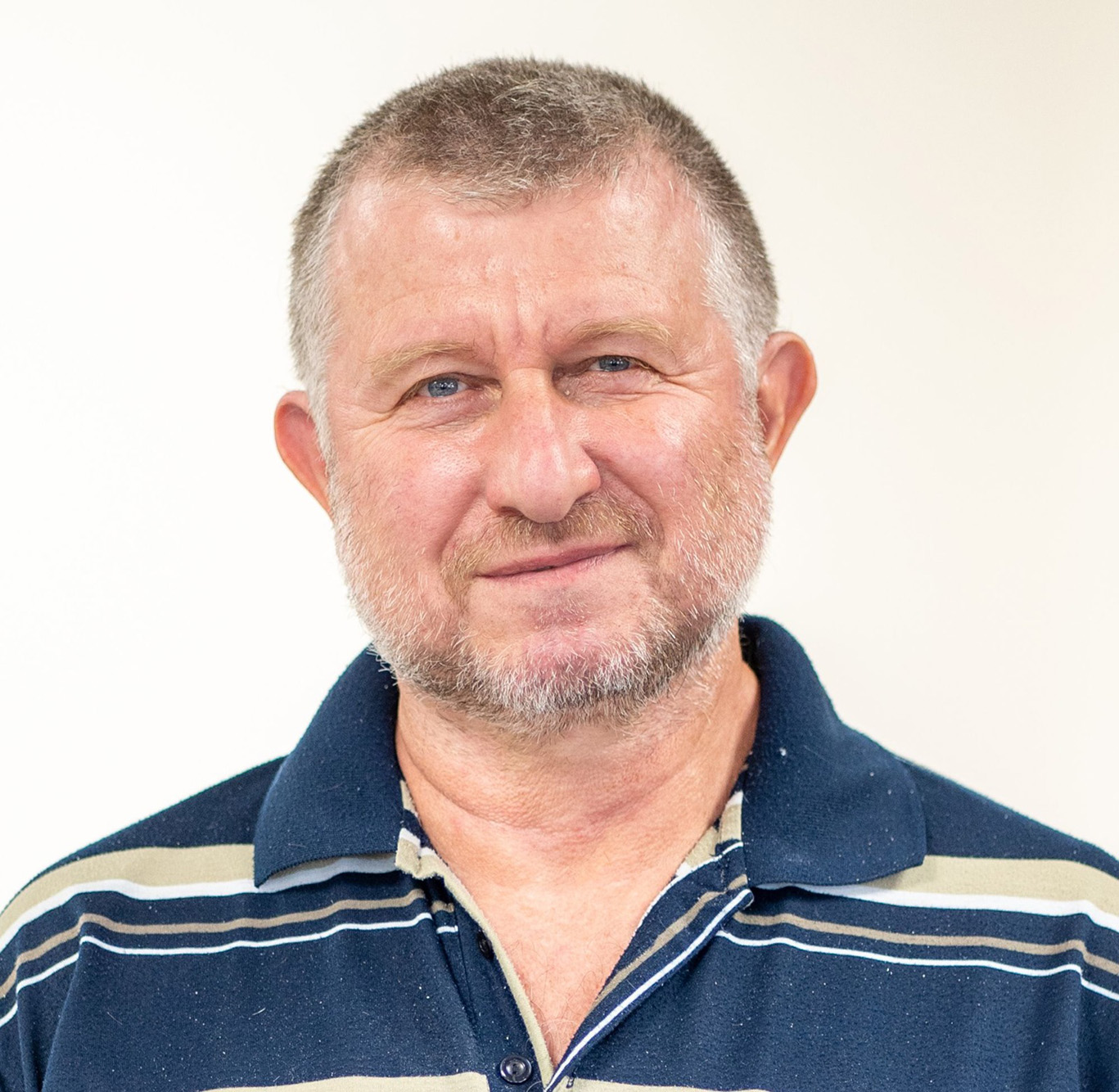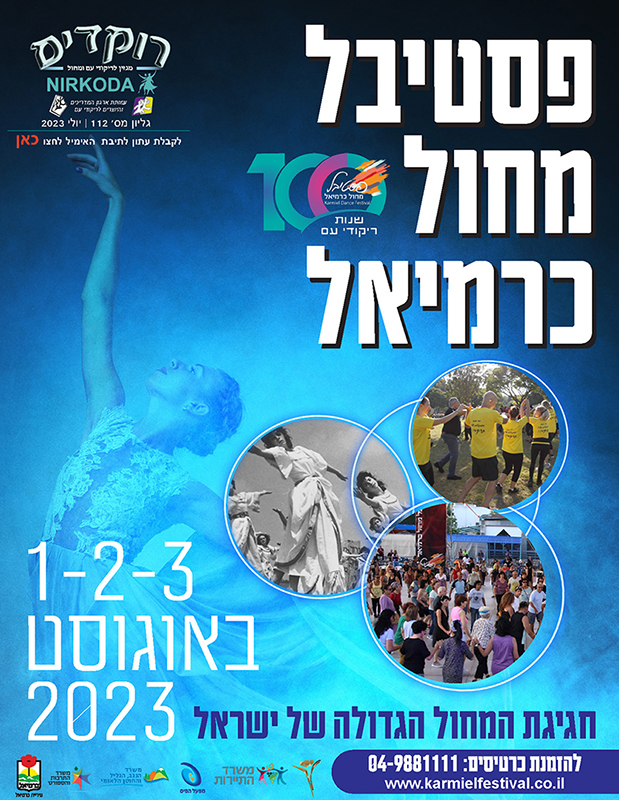- Home
- Rokdim Nirkoda 112
- Conversations with Israela Kahane
Conversations with Israela Kahane
Instructor, Teacher, Educator - Woman of Culture
- Translation: Naftali Chayat
- Translation: Ruth Goodman
Introduction
Israela Kahane (pronounced Yizre’ela Kahana) is a prominent figure in the Israeli folk dance community, not for being a “Markida” (dance leader) or a choreographer, but rather for her lifelong educational activity in Seminars for Israeli Folk Dance Instructors (“madrichim”). When I met her in Giloh, Jerusalem, after the editor, Yaron Meishar, suggested that I interview her, I discovered a fascinating lady, who in her nineties is razor-sharp and is even writing a doctorate in literature – Hebrew literature being just one facet of her broad range of cultural interests, which also affected her work in the field of dance.
Early years
Israela’s parents immigrated two years apart from the border between Ukraine and Belorussia (White Russia) in the 1920’s. Her father was the son of a rabbi who followed the Zionist ideal and he came to Hadera – to Chavurat Shomron – The Samaria Group – an agricultural pioneering group of farmers. Her mother was involved in organizing pioneers to work in the orchards. They married in Moshav Merhavia, near Afula, and Israela was born in the central hospital of the Jezreel Valley [Emek Yizrael] – hence her name.
The family lived in Hadera until 1940, and then moved to Kfar Vitkin. Her father was responsible for cultural activities – organizing events, bringing theater performances. Israela vividly remembers “The Dybbuk”, performed by the Habima Theatre.
Israela started dancing when she was 10. Her father would take her to workshops with Gurit Kadman in Tel Aviv (at 5 Shalag Street, she emphasizes). There she met with Tirza Hodes and with Ze’ev Havatzelet, who worked with older children.
What Israela learned in the workshops, she would bring and teach to the children in Kfar Vitkin. For festive Jewish holiday events, she prepared dances for the performances in which she would translate the content of the “tractates” into the language of movement. Thus, already at an early age, Israela was involved in choreography and teaching dance, without explicitly calling it so. She remembers a dictionary that she received from the school principal in recognition of her work.
During those times, women went primarily into the professions of teaching and nursing. The training took two years, and so, when in the 12th grade, she relocated to Tel Aviv. She came to Rishpon to dance and participate in the dance troupe of Yoav Ashriel z”l, with which she performed. The connection continued during her military service, when she was recruited, without any training, into the Havai troupe (Tzevet Havai – entertainment team) of the Nahal [Noar Halutzi Lohem, i.e., Fighting Pioneer Youth]. In 1956, she served at a military base near Be’er Tuvia [a moshav in the Southern District of Israel] and Nahal groups from all over the country would send couples to learn how to prepare ceremonies, which songs and texts should be used, and which dances to dance. These were not folk dances, but rather, movements to accompany the ceremony. Later on, she went down to the Negev with the Moshavim answering Ben-Gurion’s call to help absorb immigrants. There she ran the “Nahal Gerar” school serving the rural settlements of Brosh, Tidhar and Ta’ashur in absorbing immigrants – as in the verse in the book of Isaiah – and there too, she prepared ceremonies in which she incorporated folk dances. At the school, she also taught Hebrew, the Bible (Tanach) and folk dances to immigrants from North Africa (Maghreb countries).
The sequel
Israela continued her education in Jerusalem, studying education and special education at the Hebrew University. She continued to dance in the “harkadot” (dance sessions) led by Danny Uziel, Eddie Sasson and others. During 1960-62 she danced in the student troupe, led by Micha Spira. The troupe performed mostly choreographies by Yonatan Karmon z”l. A culmination of this activity was the troupe performing at the International Folklore Festival in Istanbul, Turkey, in 1962. Rivka Michaeli [an Israeli actress, comedian, television hostess, and entertainer], was the moderator, and she even spoke in Turkish.
After marrying in 1962 and having children, Israela became less involved in Israeli folk dance. However, during her husband’s sabbatical as a Professor of Sociology, in Cambridge, UK, in the 1970s, she organized and led a folk dance group.
Israela studied education for special needs children, guided by Prof. Frankenstein, a disciple of Carl Jung and Sigmund Freud. Later, she worked in teaching and education at “Ussishkin”, in the “David Yellin Teachers’ Seminar” and at “Aliyat HaNoar – Youth Aliyah” (led by Eli Amir) in Jerusalem.
Literature studies
The profound interest of Israela in Hebrew and Israeli culture has deeply influenced her approach to Israeli folk dance. Her interest in Hebrew literature matured to a decision and desire to do an advanced degree in literature. In her seventies, she earned a master’s degree in literature, on the works of Natan Alterman. These days, in her 90s, Israela is writing a doctoral thesis, “In the Shadow of the Last Mask”, on the later works of Natan Alterman.
Now in her 90s, she is razor-sharp, quoting long passages of literature and poetry from memory. When I told her about my grandson, Tammuz, she immediately went to Assyrian mythology, the god Dumuzi, known to the Sumerians as Dumuzid the Shepherd, and the place of Assyrian mythology in Alterman’s work. She told me about a book by Lucretius that she was reading (translated by Shlomo Dickman), who in ancient times already wrote that there is nothing to fear from God and that man is made of particles. This is a book that was hidden and had emerged after 500 years…
Delving into the ancient and contemporary cultural sources has always been an important part of her dance work. Thus, in the workshop for the development of “Instructors of Instructors” that took place in the mid-1990s, organized by Tirza Hodes (in which Yaron Carmel, Carmela Carmi, Avner Naim, Pnina Klein, Yael Yaakovi, Yigal Triki, Yoav Sidi, and Yaron Meishar also took part), Israela lectured about dancing in the Bible. For example, she told me about the section that mentioned the daughters of Israel who had danced in the vineyards.
Teaching in the Ulpanim – Courses for Israeli Folk Dance Instructors
A central part of Israela’s work is the field of Ulpanim for Folk Dance Instructors. From 1980, for about 30 years, she was on the leading team of the Ulpan in Jerusalem, together with the late Bracha Dudai, and later, together with Yael Yaakobi. For several years she taught at the Wingate institute together with Liora Slutzky.
Israela contributed to the terminology for folk dances, to the methodology of instruction, to deepening the language of folk dance, to the understanding of music and structure, steps, sections, and a method of notating dances. Israela always emphasized the content of the songs and the knowledge of the lyrics of the songs.
Many of Israela’s students are well known today in the world of folk dance – Boaz Cohen, Mimi Kogan, Yael Yaakobi, Yoram Sasson, Iris Avner studied with her in the 80’s – until the 2000s. At that point we can mention Sharon Elkaslassy, Hila Mukadsi, Tamir Shalev, Sagi Azran, and Doron Valensi. Everyone I spoke with recalled her tremendous knowledge of culture and history, which added an important dimension to the course. As the mother/grandmother of the course, they mentioned her personality, manner of speech, her welcoming attitude toward people and her knowledge of culture. Students got to know the history of folk dance from her personal experience. Israela spoke about Festival Dalia – the dance festivals at Kibbutz Dalia – from her own experience, as she was there. She talked about meetings with Yoav Ashriel. Also about dance for the stage and Yonatan Karmon. It gave the students a “touch of history”.
One of the Israela’s activities, together with the late Yonatan Gabay and Bracha Dudai, was the “REIM” (Rikudei Am Yisraelim – Israeli Folk Dance) chug. The class would go on enrichment trips to different parts of the country, in which 50-100 people would take part. They would read texts, dance folk dances and for each such trip, they would produce a booklet with the relevant contents. The artist, Dror Ben Dov, even designed a logo for the REIM chug. These were happy and enriching gatherings.
Israela is particularly proud of the collection of works by students in the Instructors’ Course. As part of the course, the students were asked to do in-depth research projects – Israela mentored those course students who prepared these projects. This way, the students learned the folk dances not only at the movement level, but also through the cultural and historical aspects and works of Israeli choreographers. Among the works she showed me were works such as “Avner Naim – From Dancer, to Instructor, to Choreographer”, “Ethnic Dance in Israel and its Connection to Folk Dance”, “Israeli Dance and Folk Dance for Children”, “The Contribution of the Yemenite Community to Israeli Folk Dance”. There is no doubt that people who experienced preparing these works are more knowledgeable instructors who have brought added value to their own classes.
Israela’s activity at the Israeli Folk Dance Instructors’ Course (Ulpan) in Jerusalem continued until the 2010s, when it ceased operations. At first it operated under the auspices of the Folk Dance Section of the Histadrut (Gurit Kadman, Tirza Hodes and Rina Meir), but the people leading the Ulpan did not excel in marketing, and competition from other venues led to its decline and closure.
For her many years of activity and contribution, in 2012, the Association of Folk Dancers and Choreographers in Israel and the Diaspora awarded her the honored title of, “Yakirat Ha’Irgun – Beloved Member of the Association”.
The contribution of the kibbutz movement and the working settlements
In our conversation, Israela emphasized the Kibbutz Movement and its central role in the field of Israeli Dance. The agricultural working settlements were the first to connect to history without associating it with religion, as perceived by Orthodoxy. People immigrated to Israel from religious homes and wanted to give a new modern meaning to their lives, including a new meaning to the holidays.
The kibbutzim produced their own versions of the Passover Haggadah. At Ramat Yohanan, “Chag Ha’Omer – The Festival of the Omer” ceremony on Passover and “Chag Ha’Mayim – The Water Festival” on Sukkot were put together by Mattityahu Shelem (musical composer) and Lea Bergstein (choreographer) and for over 70 years, they are still taking place today. There was always a combination of text and dance. The dances expressed collective unity – “we” and not “me”. The dances gave expression to equality, regardless of ethnicity and social class; everyone danced together. Holiday dances and folk dances also featured holding hands in circle dances.
Many of the central figures in the field of Israeli folk dance came from the kibbutzim. Thus, Mattityahu Shelem and Lea Bergstein who came from Beit Alfa to Ramat Yohanan; Rivka Sturman in Ein Harod, and Ze’ev Havazelet in Beit Alfa. The dances are only one part of Israeli culture which the kibbutzim influenced – we can mention poets/lyricists such as Yoram Taharlev from Yagur, Lehakat HaGevatron (Kibbutz Israeli Folk Singers), and the “Shira Betzibur – Community Singing” Movement of which Sarah’le Sharon of Ashdot Ya’akov was one of the founders.
Miscellanea
My conversations with Israela touched upon many topics, and it is interesting to note various points that came up in the conversation.
We talked about the late Dr. Dan Ronen, who had been the director of Department of Culture and Art at the Ministry of Education and Culture and director of the Israeli branch of the International Council of Organizations of Folklore Festivals and Folk Arts, CIOFF, and about his unique contribution to the folk dance heritage. His three daughters continue the family Israeli folk dance tradition.
We talked about Rina Sharet and her contribution in writing about Israeli dance – books about Shalom Hermon, Rivka Sturman, Ze’ev Havazelet and more.
We also spoke about Shlomo Maman and his tremendous contribution to the fields of choreography, troupe management and his contribution to the Karmiel Festival.
In our conversations, issues of old versus new dances came up as well as the proliferation of dances today. Also, the commercial forces in the world of folk dance today, that have shifted the control over the dances that will reach the public, from the experts in the field and the organizers of the training sessions (such as Yoav Ashriel, Mishael Barzilay) to the organizers of big dance events.
We discussed the relatively little influence on the folk dances of the more recent immigration waves and the communities that immigrated with them. (E.g., Russian, Georgian – compared to the early immigrants, i.e., the Hora from the Balkans, old Russian songs, Yemenite influence). The later immigrants did not aspire as much as previously to the integration of their culture into the Israeli culture. In the context of the contribution of the Yemenite community, we talked about Sara Levi-Tanai, founder of the Inbal Dance Theater, Yankele Levy, Moshiko Halevy and their unique contributions.
Israela sees the loosening of social cohesion with grief. Today, everything is more individual. Even in folk dance, people no longer hold hands. Today, folk dancing is seen as a time of leisure and entertainment rather than as a cultural activity. I told Israela about an experience of visiting a dance session held at a synagogue in the USA, where families came together with children and teenagers. The repertoire was not much different from what is danced in Israel, but it was clear that this dance activity also had an important community and family bonding role.
Israela’s Library
Israela’s house hosts an impressive number of books related to dance in general and Israeli dance in particular. Books, papers, course notes. Many items in this collection are of great value to the history of folk dance. In our conversation, Israela mentioned her desire to give these materials to an institution that would help preserve them and make them accessible to dance researchers – I hope that someone will help to preserve Israela Kahane’s contribution to folk dance and to pass it on to the future through raising future generations of Israeli folk dance instructors.









Comments
התראות